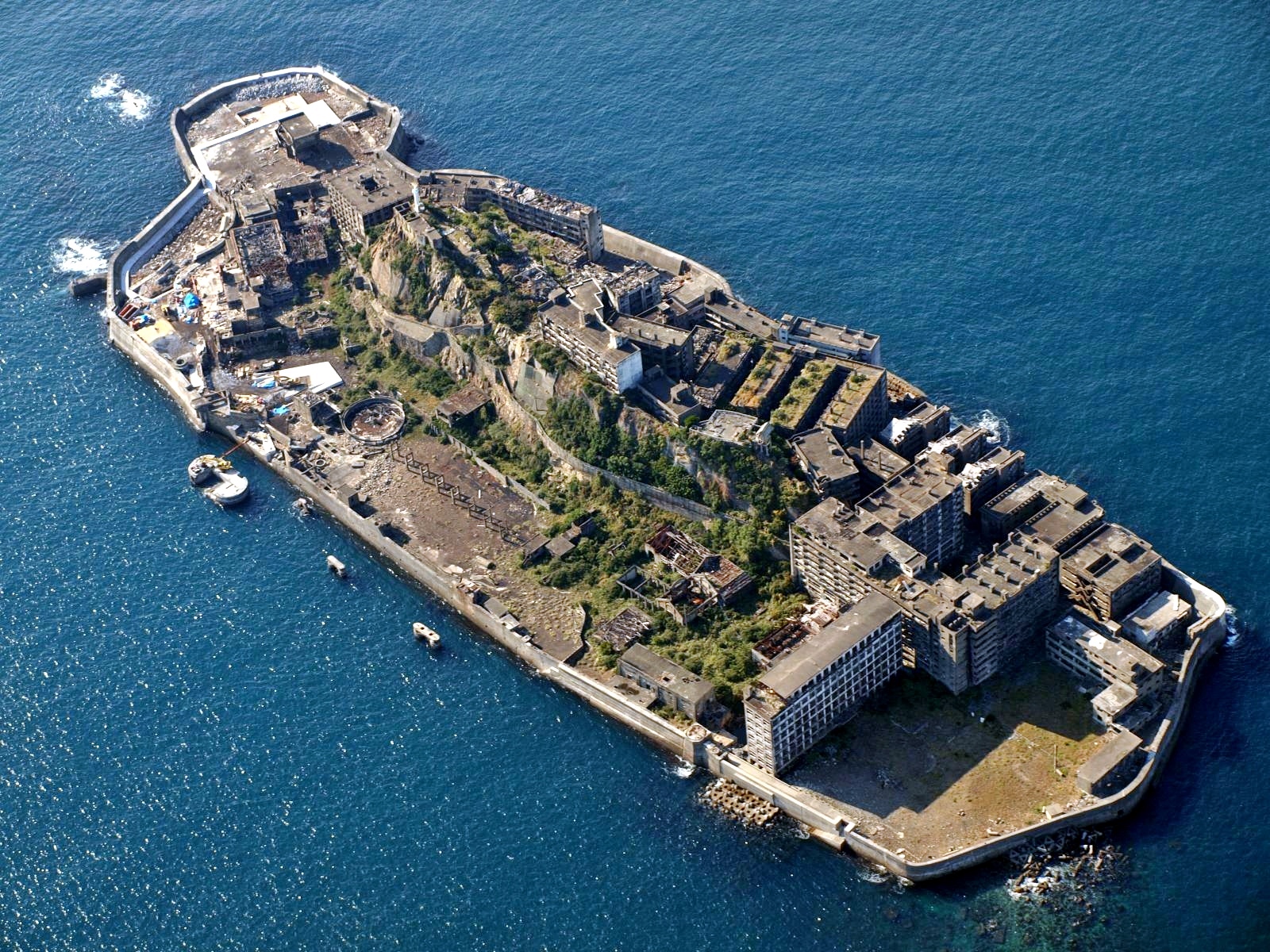Japan’s Gunkanjima, or Battleship Island, stands as a hauntingly beautiful and historically significant testament to the nation’s industrial past. Located off the coast of Nagasaki in the Kyushu region, this small, desolate island has a unique history that has captured the imaginations of urban explorers, historians, and filmmakers alike. In this article, we will delve into the fascinating story of Gunkanjima, its rise, fall, and the mysteries that shroud it. Gunkanjima’s nickname, “Battleship Island,” stems from its uncanny resemblance to a naval vessel when viewed from afar. It wasn’t always an abandoned ghost town; in fact, the island was once a bustling coal mining community that embodied Japan’s rapid industrialization during the late 19th and early 20th centuries. The Mitsubishi Corporation began mining coal on the island in 1887, and over the years, it became one of the most densely populated places on Earth. It boasted high-rise apartment buildings, schools, a hospital, and even a movie theater. The miners and their families lived in relative isolation on the island, with towering concrete walls protecting them from typhoons and tsunamis.

For several decades, Gunkanjima thrived as a vital coal mining facility. The island was self-sufficient and highly productive. However, with the shift towards petroleum as a more viable energy source, the demand for coal began to dwindle. By the 1960s, Gunkanjima’s decline was evident, and the Mitsubishi Corporation shut down its mining operations in 1974. This marked the beginning of the island’s slow descent into abandonment.
Residents left the island in a hurry, leaving behind personal belongings, furniture, and reminders of their daily lives. Today, Gunkanjima serves as a time capsule of a bygone era, preserving a snapshot of life in Japan during the industrial age. Gunkanjima’s eerie and enigmatic atmosphere has made it a popular subject for photographers, urban explorers, and filmmakers. Its crumbling concrete buildings, peeling paint, and rusting structures create an otherworldly, post-apocalyptic ambiance that draws in visitors from around the world. One of the most notable instances of Gunkanjima’s portrayal in popular culture is its appearance in the James Bond film “Skyfall,” where it served as the backdrop for a climactic showdown between 007 and the film’s antagonist. Additionally, the island inspired the animated film “Attack on Titan: The Movie,” reflecting its significant role in the exploration of history and dystopian storytelling.
Despite its abandonment, Gunkanjima’s historical significance is widely recognized. In 2015, the island was granted UNESCO World Heritage status, which brought attention to its unique history and architecture. UNESCO’s designation ensures that the island’s remains will be preserved for future generations, allowing visitors to explore the island in a responsible and respectful manner. In recent years, guided tours to the island have been made available, allowing visitors to explore its decaying structures while learning about its history. These tours offer a controlled and safe way to experience the island’s unique atmosphere.
Gunkanjima, Japan’s Battleship Island, is more than just an abandoned relic of the past; it is a tangible link to Japan’s industrial heritage and the resilience of its people. The island’s journey from a thriving coal mining community to an abandoned ghost town is a poignant reminder of the changing tides of industry and technology. As Gunkanjima continues to draw the curious and the intrigued, its allure as an urban exploration destination remains steadfast. This enigmatic island, frozen in time, serves as a living museum of a bygone era, and its history is sure to captivate generations to come.


